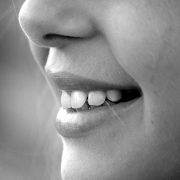What are Temporary Anchorage Devices (TAD’s)?
Last Updated on April 3, 2019 by Guest Post
If you’re considering having your teeth straightened at some time in the future, TAD’s are items that are designed to help move your teeth into their correct position. They can either be used when you’re wearing braces to assist with treatment or in the place of headgear. This treatment has gained popularity over the past decade or so. And maybe something that you would like to consider once you have a better understanding of how TADs work and what they entail. You should also speak with your orthodontist about this treatment if you believe that it would help improve your smile or correct your bite.
What Does TAD Stand For and Why Is It Important?
Tad’s are very small devices that are known as Temporary Anchorage Devices. They are dental implants that are comprised of a durable titanium alloy. When you request this treatment, these devices will typically be placed inside your mouth for anywhere from 3-4 months before being removed. Which occurs once they’ve achieved their intended purpose. In order to best understand how they work, picture a boat that drops anchor in order to remain rooted in one spot as opposed to drifting out to sea.
Temporary Anchorage Devices are similar in that the dental implant acts as an anchor or fixed position from which your teeth will move. When a TAD is placed into your mouth, it will be installed within the jaw in an area that connects the tooth to the bone. The device is tiny and will help to move your teeth into their correct position. Without needing to use an actual tooth as the anchor as other treatments do, which is something that can weaken your tooth or pull it too much.
This treatment option typically eliminates the need for bulky headgear. Gear that sometimes required in those who are attempting to have their teeth straightened. The usage of Temporary Anchorage Devices can shorten the length of your teeth straightening treatment. Treatment such as Invisalign, while also eliminating the requirement of wearing what is known as elastics or rubber bands. These devices can also make a dental issue treatable that was previously not, such as an open bite that was more severe than standard Invisalign aligners or brackets could fix on their own.
Is This Treatment Painful?
Although you can expect a small amount of discomfort. The pain levels associated with the implant of these devices is minimal at most. As each implant is only 1.5-2.0 millimeters in diameter. When your orthodontist is about to place the implant in your gum, they will first use local anesthesia in order to numb the area. This will mitigate any potential pain that you could experience. Even with this anesthesia, you will likely feel some pressure as the implant is inserted. But nothing that will cause too much pain. In a couple of days following the treatment, the anesthesia will wear off and leave you with some discomfort that should soon pass.
However, if the area remains painful for more than three days, it’s important that you contact your orthodontic office. Then schedule an appointment and see if there’s an underlying issue that needs to be addressed. When the implant is set to be removed a few months after it has been inserted, this is done without the use of anesthesia as the pain is hardly noticeable. The small hole created by the implant will heal over the course of several days.
Do TAD’s Come With Any Risks and Side Effects?
Given the fact that these devices are attached to the bone within your jaw as well as the gums. You’re able to avoid the possibility of having your teeth damaged, which is something that can occur with similar treatments. Even though these implants are placed in your gums, they do not cause any damage to the tissue in this area. Which means that you can be confident in the safety of these devices. Although these implants should remain secure throughout the entirety of your treatment, it’s possible for them to loosen. While this doesn’t cause much pain, you may need to have them replaced. This is to ensure that you’re able to obtain the results you want from the treatment.
What To Do When Temporary Anchorage Devices Are In Use
As is the case with any teeth-straightening appliance that you have placed in your mouth. You will want to treat the devices that have been implanted into your mouth with care. So that the treatment progresses as well as it’s supposed to. For the first 5-7 days of treatment, it’s recommended that you rinse your mouth with a mouthwash. Preferably one that’s anti-bacterial at least twice each day. For the best results, place a small-bristle toothbrush into the mouthwash and gently rinse the top of the implant. If you typically use an electric brush when brushing your teeth, it’s essential that you stay away from hitting the implant when brushing. In order to avoid this issue, consider using a manual toothbrush until the implant has been removed.
If ever you experience irritation when the implant is in your mouth. You may want to place some orthodontic wax over the top of the implant to reduce the irritation. In the event that these issues don’t dissipate, speak with whoever is in charge of your treatment. There are some more specific tips and guidelines that you might be required to follow for the care of these Temporary Anchorage Devices while they are in place. But these will be told to you at the orthodontic office once they’ve been inserted into your mouth. If you follow each of these tips, the implants should remain in good condition, allowing your teeth to be straightened and your smile to become radiant and beautiful.
Contact us today because everyone should love to smile!
BEACH BRACES ORTHODONTICS
220 N. Aviation Blvd. Suite A
Manhattan Beach, CA 90266
Phone: (310) 379-0006
Fax: (310) 379-7051
What are Temporary Anchorage Devices (TAD’s)?

Dr Patti Panucci attended the University of Louisville School of Dentistry for four years, where she graduated with a DMD degree (May 2000) among the Top 10 in her class. Following that, she headed west to Los Angeles to complete her three-year residency at one of the top-ranked orthodontic programs in the country – the University of Southern California.
Along with her certificate in orthodontics, Dr. Panucci earned a master’s degree in craniofacial biology. During those three years, she fell in love with Southern California beach life and decided that this was where her future lay.













Leave a Reply
Want to join the discussion?Feel free to contribute!